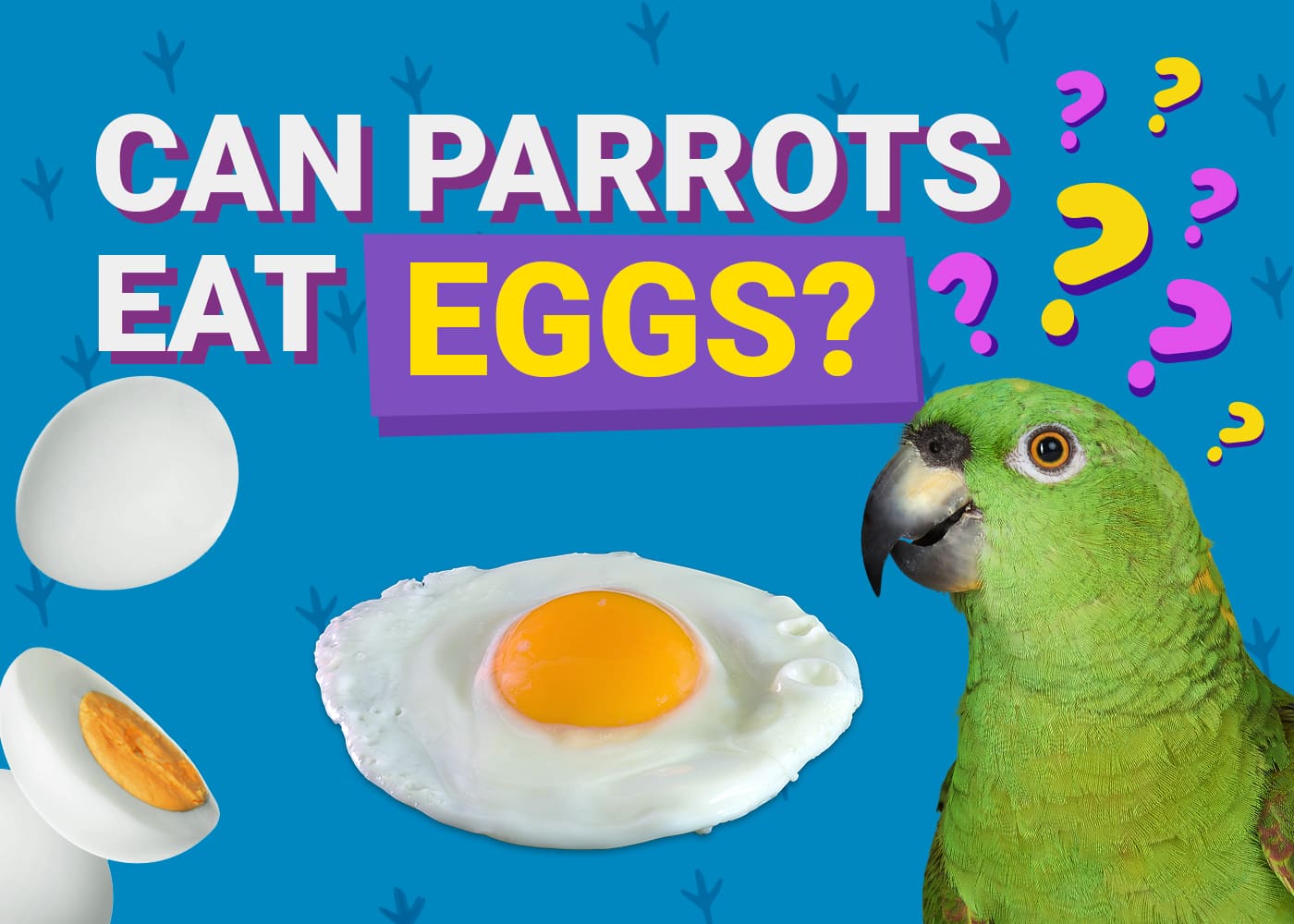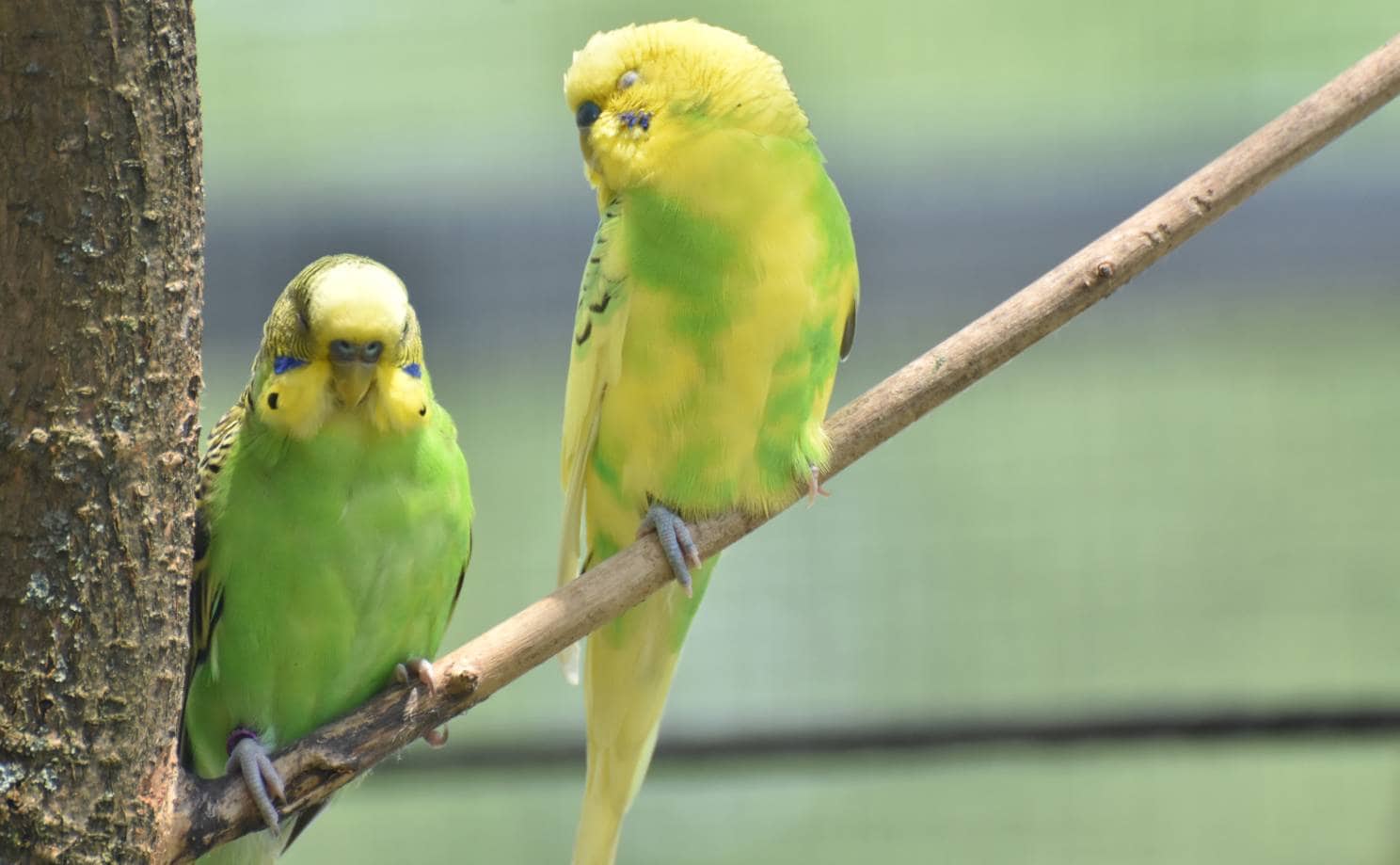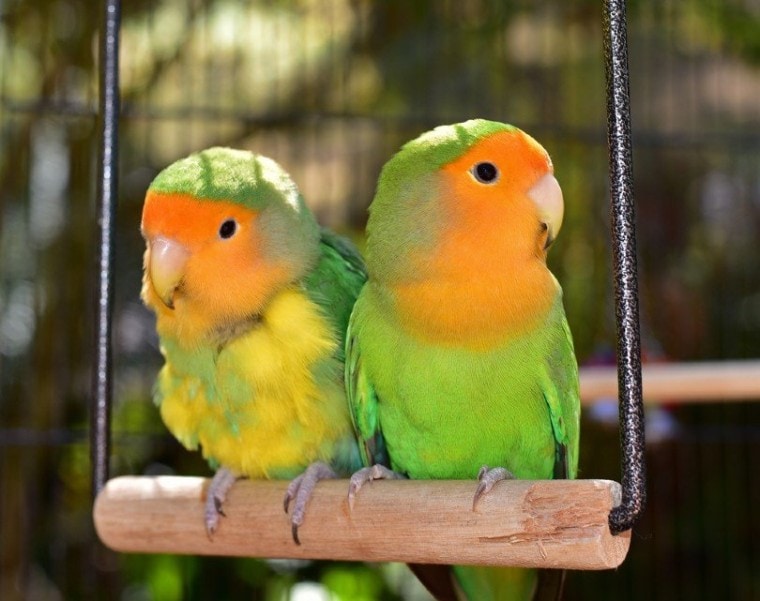
The Peach-Faced lovebird, also known as Rosy-faced lovebirds, Rosy-headed lovebirds, and Rose-ringed lovebirds is a species of parrot native to Africa that measures 6 inches in length and weighs between 1.6 and 2.2 ounces.
These birds are named for the pink feathers on their face breast area. They are active, friendly birds and spend most of their day moving. This species is one of the most widely kept pet birds in the United States.
Species Overview
| Common Names | Rosy-faced lovebird, Rosy-headed lovebird, Rose-ringed lovebird |
| Scientific Name | Agapornis roseicollis |
| Adult Size | 15 – 18cm |
| Life Expectancy | 12 – 20 years |
Origin and History
The Peach-Faced lovebird is native to the southwestern portion of Africa. They inhabit the northwest corner of South Africa and are distributed throughout the western portion of Namibia.
This parrot has a lengthy history of being kept and bred in captivity. There have not been extensive studies on them in the wild. As a result of the pet trade, there is now a thriving population of Peach-Faced lovebirds in the state of Arizona. Loose and escaped pet birds colonized and reproduced in the prime weather conditions of Arizona.
The first record of the Peach-Faced lovebird in captivity is from 1869. Their scientific name was originally Psittacus roseicollis but was later moved to the genus Agapornis with the other lovebirds.

Temperament
Peach-Faced lovebirds are very friendly birds that love to be around people. Their spritely personalities can make them quite entertaining to be around. To ensure your bird is tame, daily interaction is essential. They are not good talkers but are very intelligent and can be taught a variety of tricks.
These birds form strong bonds with whoever they consider their mate. This could be their human companion or another lovebird. They tend to become jealous if their mate gets attention from others. Socializing your bird with other humans may improve their jealous tendencies but it is not uncommon for this bird to cling to one person.
Peach-Faced lovebirds will require daily interaction with their chosen mates for the sake of their mental and overall health. Peach-Faced lovebirds become so attached that they will sink into a depression at the loss of a mate.
They should be provided plenty of room to fly to maintain their physical well-being. If proper mental and physical stimulation falls short, it can cause your Peach-Faced lovebird to resort to feather plucking.
These birds do tend to chirp all day long and will not be well-suited for an owner that prefers quieter birds. They are also known to exhibit biting issues. Due to this, Peach-Faced lovebirds are not recommended for a home with small children.
Peach-faced love birds have dominant tendencies and will lash out at any perceived threat. It’s best to supervise them closely if in contact with any other pets or small children.
Speech & Vocalizations
Peach-Faced lovebirds are known for the shrill call that they make. It can be produced in single notes or repetitions. When excited or in distress, the repetitions tend to pick up speed.
Peach-Faces like to chatter a lot. As far as pets go, they are very loud when they want to be, so they will not be suitable for everyone
Lovebirds are not great talkers, a lovebird will rarely mimic human voices. If consistently trained from a young age, it may be possible for your bird to mimic a few words.
Expect to hear singing, whistling, and chattering all day long as an owner of a Peach-Faced lovebird.
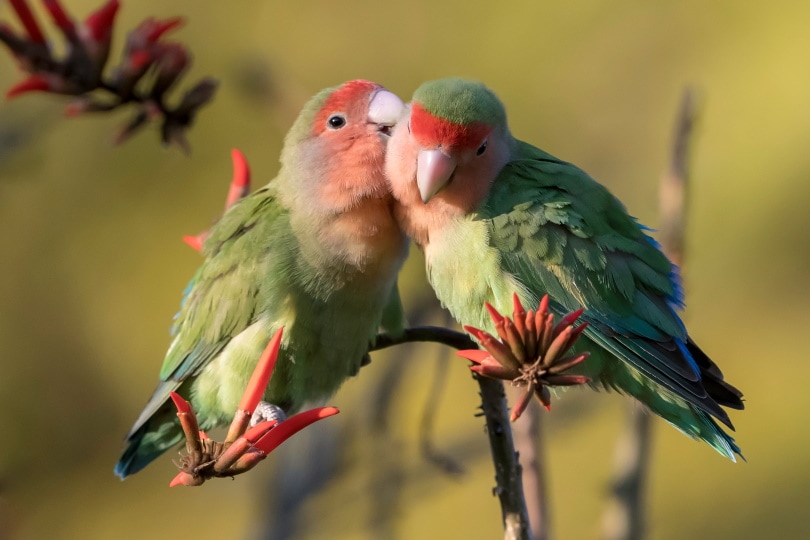
Peach-Faced Lovebird Colors and Markings
The Peach-Faced lovebirds are popular as pets due to their striking coloration. They are regarded as one of the most beautiful lovebird species. They get their name from the pink to reddish feathers on their face and upper breast area.
These birds have distinct pink foreheads, chins, throats, upper breasts, and cheeks. The rest of the body is primarily bright green. The underside tends to be slightly lighter. The lower back has a bright blue coloration and the tail feathers are green with blue tips.
Younger birds have much paler faces than their adult counterparts. Brighter feathers tend to show up after their first molt. Males are typically more vibrant and females tend to be duller in color. However, it can be difficult to differentiate genders.
Caring for the Peach-Faced Lovebird
In captivity, Peach-Faced lovebirds can either be kept in bonded pairs or as single birds. As mentioned above, they are very social birds and will find a mate in either a fellow lovebird or their human companion.
If you plan on having more than one lovebird, make sure it’s another Peach-Faced lovebird. They tend to be aggressive with other species.
The cage size for a single Peach-Faced lovebird should spacious to ensure your bird can move around freely and get plenty of exercise within the enclosure. These birds will thrive best in temperatures ranging from 65 to 80 degrees Fahrenheit. Keep in mind, these small parrots are sensitive to sudden drastic temperature changes.
These birds love to bathe and will require frequent access to do so. They may enjoy misters or shallow bathing bowls. Enriching items will need to be readily available for their exercise and stimulation needs. Perches, swings, ladders, bells, bird-safe chewable toys, puzzles, and wooden toys are great items to provide.
You can expect your Peach-Faced lovebirds to molt twice a year, most often in the spring and fall.
Their diet should be based on a high-quality pellet or fortified seed mixes can be used as a base diet. They will need a variety of fresh fruits and vegetables as well.
Common Health Problems
With proper husbandry and a well-balanced diet, a Peach-Faced lovebird can live between 12 and 20 or more years. Optimum nutrition is based on balance for lovebirds. An ailing bird must be presented to a veterinarian as soon as possible. Below are some common health issues you can be on the lookout for as a Peach-Faced lovebird owner:
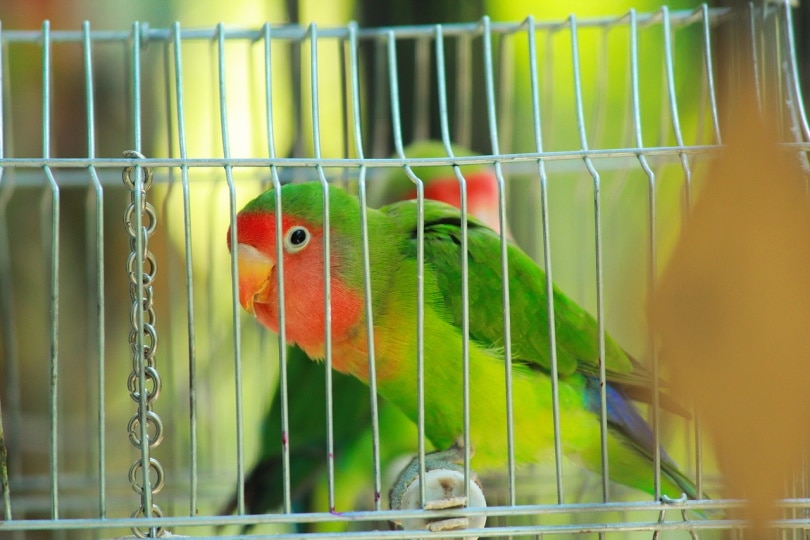
Diet and Nutrition
The natural diet of lovebirds consists of seeds, grain, berries, and other fruits. For a healthy, balanced diet, it is necessary to provide a variety of fresh foods as well as seed or pellet mix for your Peach-Faced lovebird.
You will need to touch base with your veterinarian to ensure you are feeding the best diet to your bird and to discuss any foods to avoid. Seed mixes and pellet food can be fed as a base. Below is a list of various fresh foods that can be implemented into your Peach-Faced lovebird’s diet.
Exercise
In the wild, Peach-Faced lovebirds spend their days flying, foraging for food, and other sociable activities that keep them in prime physical condition. Captive birds are very limited compared to their wild counterparts and it’s up to the owner to do what they can to maximize their bird’s exercise.
Peach-Faced lovebirds need a lot of exercises and human interaction to maintain optimum health. Having an abundance of toys and opting for a spacious cage will help them keep occupied.
Purchasing ladders, ropes, and toys for your Peach-Faced lovebird will encourage movement and activity. Birds like to toss around foot toys, they make for an excellent source of activity.
It’s encouraged that you play games with your bird such as fetch or take some time for dancing and teaching tricks. Have a designated bird-safe area in your home to allow your bird to get out and explore each day will help make ensure that your bird is getting the exercise it needs.
Where to Adopt or Buy a Peach-Faced Lovebird
The Peach-Faced lovebird is a very common pet in the United States. You will have the option to purchase from a reputable breeder, adopt a rescue bird, or possibly purchase from a local pet store.
Considering that lovebirds can be difficult to tame at an older age, it may be best to research a reputable breeder in your area or contact a local rescue. Breeders and rescues tend to socialize and interact with the birds in their care, whereas pet stores cannot solely focus on socialization.
You can expect to pay anywhere from $50 to $150 for a Peach-Faced lovebird. Prices can increase for certain color mutations within the species.
Final Thoughts
Peach-Faced lovebirds are beautiful, vibrant, and social pet birds. You will need to take into consideration the pros and cons of owning the bird before bringing one into your home.
They will require exercise, stimulation, and human attention. These birds will form a strong bond with you that lasts their lifetime. Your colorful feathered friend can be with you for up to 20 years with proper care, a commitment that should not be entered into lightly.
See Also:
Featured Image Credit: Tracy Starr, Shutterstock


